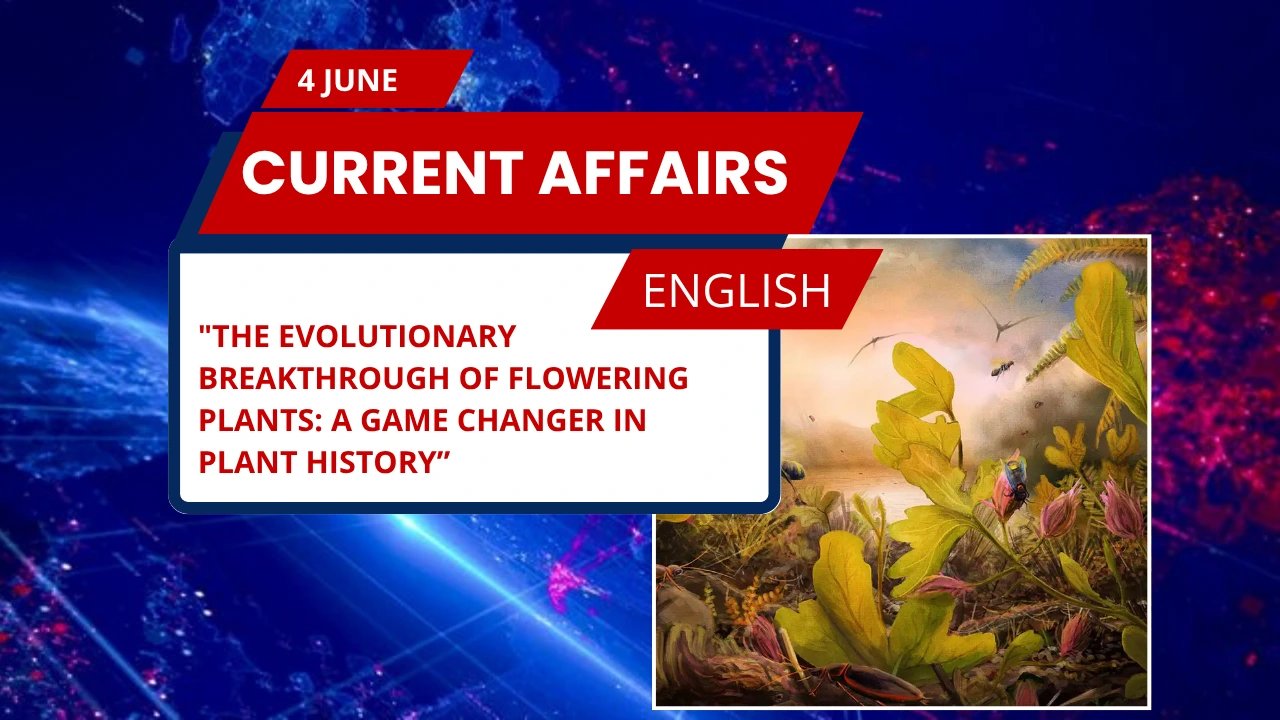
Key Points for SSC & Other Govt Exams
- Plants evolved from aquatic algae to land species over 450 million years ago.
- Flowering plants emerged around 130 million years ago, marking a major shift.
- The life cycle of plants includes gametophyte and sporophyte phases.
- In flowering plants, the sporophyte phase dominates.
- Gametophytes are enclosed in sporophytes in flowering plants.
- Pollen is the male gametophyte; seeds form after fertilisation.
- The SHUKR gene is essential for pollen development in Arabidopsis thaliana.
- SHUKR gene regulates F-box genes, affecting male fertility.
- This gene emerged in eudicots around 125 million years ago.
- Climate change affects pollen quality, threatening food security.
- Research on SHUKR helps in breeding climate-resilient crops.
Detailed Blog
Introduction: How Plants Shaped Life on Earth
Plants are not just green patches around us—they are the lifeline of Earth. They generate oxygen, serve as the foundation of food chains, and shape ecosystems. Over 450 million years, plants have evolved from simple aquatic algae to complex land organisms. One of the most significant changes in this journey was the appearance of flowering plants (angiosperms) about 130 million years ago. This sudden burst of variety in flowering species baffled even Charles Darwin, who called it an “abominable mystery”. Today, science is gradually decoding this mystery.
Life Cycles of Land Plants: Gametophyte vs Sporophyte
Plants undergo two major phases in their life cycle:
- Gametophyte Phase – Cells have a single set of genes (haploid). They produce sperm or eggs.
- Sporophyte Phase – Created after fertilisation, cells have two sets of genes (diploid). They mature and produce spores that generate new gametophytes.
In early land plants like mosses, the gametophyte phase was dominant. But in flowering plants, it’s the sporophyte that takes centre stage.
Flowering Plants: A New Way to Reproduce
In flowering plants:
- Male gametophytes (pollen) and female gametophytes are protected inside sporophyte tissues.
- Pollen is carried by wind or animals to reach the female part of the flower.
- Once fertilisation occurs, seeds are formed—ready to grow into new plants.
This internalisation of reproduction made flowering plants more efficient and adaptable, enabling them to grow in diverse environments.
The SHUKR Gene: Hidden Hero of Evolution
Recent research on Arabidopsis thaliana, a model plant in laboratories, led to the discovery of the SHUKR gene.
- It is essential for pollen development.
- If the SHUKR gene doesn’t work, the plant can’t produce viable pollen.
- It also regulates F-box genes, which play a role in the same process.
- This shows a deep connection between sporophyte and gametophyte development in flowering plants.
Rapid Evolution & Adaptability of SHUKR
- The SHUKR gene evolved in eudicots around 125 million years ago.
- It has changed rapidly over time, helping flowering plants adapt to various climates.
- By altering pollen quality, plants can ensure fertilisation even in tough environmental conditions.
Why This Matters: Food Security & Future Research
Flowering plants are the backbone of global food systems. But climate change—especially rising temperatures—can damage pollen, making plants male sterile. This leads to poor seed production.
SHUKR gene research may help:
- Develop heat-tolerant plants.
- Improve crop yields.
- Ensure food security in the future.
Scientists are now focusing on more such genes to make crops stronger and climate-ready.
Static GK – For MCQs
Arabidopsis thaliana (Model Plant Used in Research)
- Type: Small flowering plant
- Family: Brassicaceae (same as mustard)
- Used for: Genetic and molecular biology studies
- Why Important: First plant to have its entire genome sequenced
Expected MCQs
Q1. The SHUKR gene is primarily associated with which of the following?
A. Leaf development
B. Seed germination
C. Pollen development
D. Root elongation
Answer: C. Pollen development
Q2. In flowering plants, which phase is dominant in the life cycle?
A. Gametophyte
B. Sporophyte
C. Zygote
D. Embryo
Answer: B. Sporophyte
Q3. Charles Darwin described the sudden appearance of flowering plants as:
A. Botanical revolution
B. Genetic burst
C. Abominable mystery
D. Evolutionary trap
Answer: C. Abominable mystery
Q4. In Arabidopsis thaliana, the SHUKR gene regulates which of the following?
A. Xylem tissues
B. Chloroplast activity
C. F-box genes
D. Seed dormancy
Answer: C. F-box genes
Q5. What is the primary role of male gametophytes in flowering plants?
A. Produce seeds
B. Absorb sunlight
C. Deliver sperm via pollen
D. Transport nutrients
Answer: C. Deliver sperm via pollen






